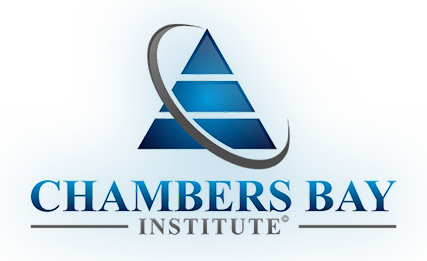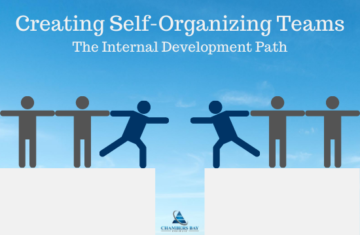• by Bruce LaRue, Ph.D. and Jim Solomon •
-
Faced with a shortage of highly skilled personnel?
-
Struggling with integrating new employees?
-
Having problems creating cross-functional skillsets within your team?
The Solution
Get your teams to self-organize by creating an Internal Development Path where team members routinely hone one another’s skills. Not to replace formal training, but rather to complement it.
Current Environment
We must challenge the implicit assumption that the leader should be the “smartest person in the room”, and that subordinates are there to receive direction and then carry out their orders. This constrains innovation and creativity in your teams and may mean that you are missing valuable operational intelligence when you make decisions.

Leaders know the critical importance of their organization’s mission to on-board new people efficiently and to ramp up their skillset rapidly. And know that it is just as important that everyone on the team, regardless of their experience level, keep their skills sharp and up to date.
It is not uncommon in today’s environment that we find that our teams have critical skill gaps as many of the most experienced people are a part of the baby boom generation and are rapidly approaching retirement. We also find that there are enormous skill gaps between the most and least experienced personnel and traditional approaches to training do not entirely close these gaps.
Get Everyone Up to Speed and Productive
Effective leaders must create a culture so that their employees understand that: 1) a flexible employee is a valuable employee; 2) once you master one skill, it is time to learn another; 3) it is expected that you cross-train and share knowledge.
Old Way – Boss trains everyone individually or conducts collective training as the “smartest one in the room”. This is not only a waste of the boss’s time but restricts the talents and innovation of your team members.
- Knowledge is power; I have it – you don’t; one-upmanship.
New Way – Get your teams engaged, sharing knowledge, owning the training – have them create the team’s Internal Development Path.
- Trusted, valued resource for the operation, A.K.A. “SME Trainer”.
Start by dividing up your team into small groups and ask each group to discuss three basic questions:
- How can we keep our internal knowledge base current and improve how we share best practices within our team?
- How can we rapidly bring new people on board and help them become productive members of the team?
- How can we prepare all our team members for growth and advancement?

Encourage everyone on the teams to contribute suggestions for what skills and competencies they all need most. These can be compiled into a set of user-friendly desktop guides for each competency area. With skill sets and competency areas identified, have your teams do all the training themselves using Subject Matter Expert Trainers (SME Trainers) derived largely from within your own organization.
Ask that each SME Trainer agree to own a specific competency area. This should include updating and maintaining associated job aids, job breakdown sheets, and resources for each key competency area, bringing their institutional knowledge base up to date.
Each SME Trainer will also be responsible to train everyone on the team based on current best practices. SME Trainers may choose to work together as a team to develop the knowledge base for each competency area, promoting greater teamwork and knowledge sharing within the group.
A best practice for the Internal Development Path is to set a routine schedule ensuring that all employees can be present for the training. Using their newly created guidebooks, SME Trainers conduct hands-on, over-the-shoulder training.
Turn Seasoned Employees into SME Trainers
There must be something in it for them! By fully embracing this process, SME Trainers will soon see that they can help to identify specific lower-level tasks that are eating up their bandwidth. The sooner they can train the new team members or less experienced ones on these tasks, the sooner they can get those tasks off their own plate. This allows the most experienced team members to focus on more complicated aspects of your business, creating a win/win for everyone involved while making much better use of everyone’s capabilities.
Leaders will see a second benefit; team members learn to solve many of their own cross-functional coordination issues this way.
Tie Rewards and Recognition to the Internal Development Path

Lasting success can only be achieved when training, recognition, and rewards are aligned with the vision. Knowledge workers need to be involved in changes that affect them. They want to learn, grow, and develop their skills. They want equal measures of autonomy and teamwork, and they want the ability to develop and share best practices.
The best people want to continually learn, develop their skills, and become more marketable. They also want recognition and rewards tied to their efforts — this is organizational currency for them.
We, therefore, strongly suggest you tie rewards and recognition to the Internal Development Path, ensuring that employee goals remain aligned with those of the organization. This forges a connection between training and career advancement that can take on a life of its own, creating a wellspring of new ideas and innovative thinking throughout your organization.
Closing the Knowledge Gap
The Internal Development Path closes a critical gap between explicit and tacit knowledge. While explicit knowledge can be codified in the form of manuals, databases, and training programs, tacit knowledge is a more refined form of know-how often concealed within the minds of individuals, teams, and communities of practice.
There is no one better to train others than the people who know the job best. While traditional forms of training remain important to the transfer of institutional knowledge, our experience has shown that these programs can be significantly augmented through the Internal Development Path as a means of cultivating tacit knowledge within organizations.
Operating in a Virtual Work Environment
For those operating in a virtual or distributed work environment, the Internal Development Path works exceptionally well. Apply the practices with groups and teams using video-teleconferencing.

Other benefits found by using the Internal Development Path:
- Helps with internal team communications
- Brings further clarity to goals
- Adds to a teamwork mindset
- Leads to optimal outcomes
These added benefits are especially important when your teams can not be together at the same location. Feedback from leaders confirms our position – during times of crisis or moving from onsite to a virtual work environment is not a time to postpone or put-off development. It helps teams to remain aligned to teams and organizational goals to keep them moving forward.
Adapted from: “Seeing What isn’t There – A Leader’s Guide to Creating Change in a Complex World” by Bruce LaRue, Ph.D. and Jim Solomon. Deeds Publishing, Atlanta.


You must be logged in to post a comment.